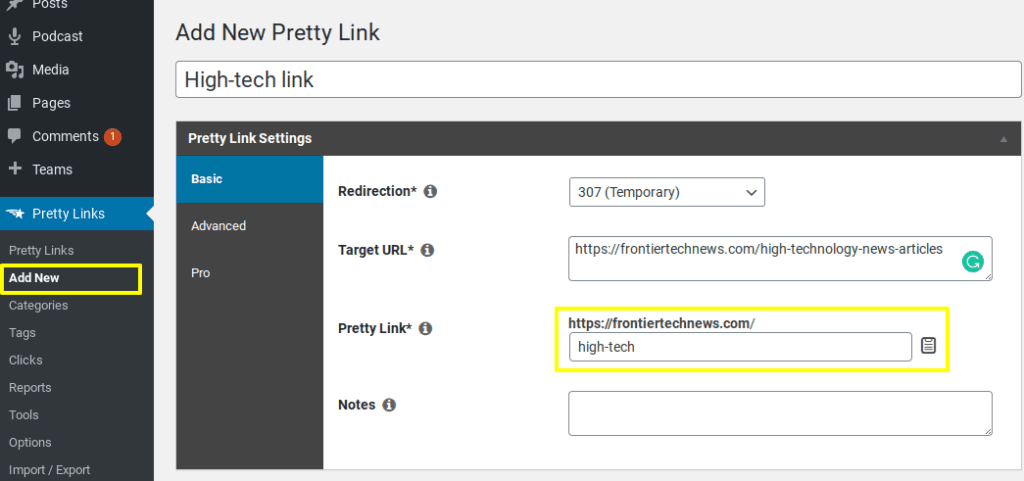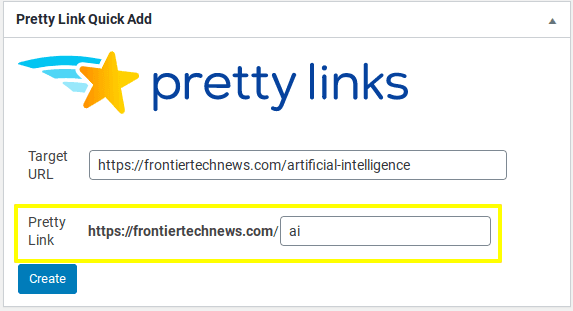Contents
When using a link shortener, understanding how to optimize your URL slug can be a confusing task. There are specific strategies involved that can be difficult for novice and experienced website owners alike to remember and implement.
However, by following a few simple steps, you can ensure that you are optimizing your shortened URL slugs effectively. In turn, this can improve the performance of your links in marketing activities.
In this article, we’ll first cover why optimizing your URL slug matters. Then, we’ll discuss several aspects of this process such as avoiding keyword stuffing, keeping slugs short, and identifying the most important and relevant terms to include. Let’s get to it!
Why Optimizing Your URL Slug Matters
Before introducing the importance of URL slugs, we’ll first explain what they are. The slug is simply part of the URL that comes after your domain and identifies a specific page on your website. For example, in the address prettylinks.com/blog, the slug is “blog.”
There are three reasons why optimizing your slugs is vital, all of which you can easily take advantage of with help from a link shortener such as PrettyLinks. First, it can improve user experience (UX) by enhancing navigation. Short, descriptive slugs can help visitors confidently move throughout your site.
Secondly, optimized slugs may increase conversions by making your links appear more trustworthy. Since the address clearly states where they’re being directed, people who see your URLs on social media or other platforms you use for marketing may feel more comfortable clicking through to your site.
When posting an affiliate link on social media, for example, optimizing your URL’s slug so that it clearly and succinctly describes the page’s purpose can increase the number of clicks it receives. Likewise, you can use this strategy for driving conversions in other marketing channels such as emails, podcasts, and even during live events.
Finally, using relevant keywords in your slug may help improve your search engine optimization (SEO). Although not a primary ranking factor, having certain terms related to the topic of your post or page in its URL can help improve its visibility and draw more organic traffic your way if your site and content are also optimized.
How to Optimize Your URL Slug When Using a Link Shortener (3 Key Tips)
If optimizing your URL slug feels like an overwhelming task, never fear. Here are three key tips you can easily be put into practice to help your page addresses stand out.
1. Avoid Keyword Stuffing
First, it’s important to avoid the practice of “keyword stuffing” your slugs. This involves using an excessive number of similar terms in an attempt to improve your search engine rankings. However, it tends to make your URLs look unnatural:

Keyword stuffing can harm your website by damaging its credibility and reducing the amount of traffic it receives. It can even lead to Google penalties due to the RankBrain algorithm update that went live in 2015.
Additionally, stuffing keywords in your slug can cause distrust amongst potential website visitors when viewing your links on social media and other marketing channels. This may ultimately reduce conversions.
Fortunately, it’s easy to avoid keyword stuffing using a link shortener. Simply use the primary target keyword for your post or page when adding a new Pretty Link:

Choosing a single term to target will help you take advantage of the SEO benefits an optimized slug can provide, instead of facing penalties.
2. Keep Your Slugs Short
It’s important to keep your slugs as short as possible by using the minimum amount of words to describe your page. Short URLs are easier to read and remember, which makes your links more attractive to potential visitors.
Additionally, a short URL is useful when sharing links on social media sites such as Twitter that have a fixed 280 character limit. When you don’t have to waste space on a page address, you have more room for meaningful content and hashtags.
With PrettyLinks, you can create slugs as short as one character in length:

To create these short links easily, you can use the PrettyLinks Quick Add Tool from the WordPress dashboard.
3. Include Relevant and Important Keywords
Discovering the best terms to use in your slug is possible through effective keyword research. This process enables you to see metrics such as search volume for words and phrases in major search engines.
As a result, you’ll know which keywords are the most popular and relevant to your target audience. You can then easily incorporate them into your slugs using PrettyLinks.
It’s important to use the right keywords in your shortened URLs, as this will capture the attention of your target audience and inspire them to click through. On the other hand, using obscure, irrelevant, or vague terms can harm conversions.
There are a number of free tools you can use for identifying the right keywords for your posts and pages, such as:
Any of these tools will show you the number of monthly searches for each keyword and provide suggestions for alternatives.
Conclusion
Knowing how to optimize your URL slug while using a link shortener can be tricky. There are several factors to weigh when deciding what to include after your domain name in a prominent link.
In this post, we covered three simple ways that you can optimize your URL slug:
- Avoid the practice of keyword stuffing.
- Keep your slugs short.
- Include the most relevant and important keywords.
Do you have any questions about optimizing URL slugs when using a link shortener? Leave them for us in the comments section below!









Leave a Reply